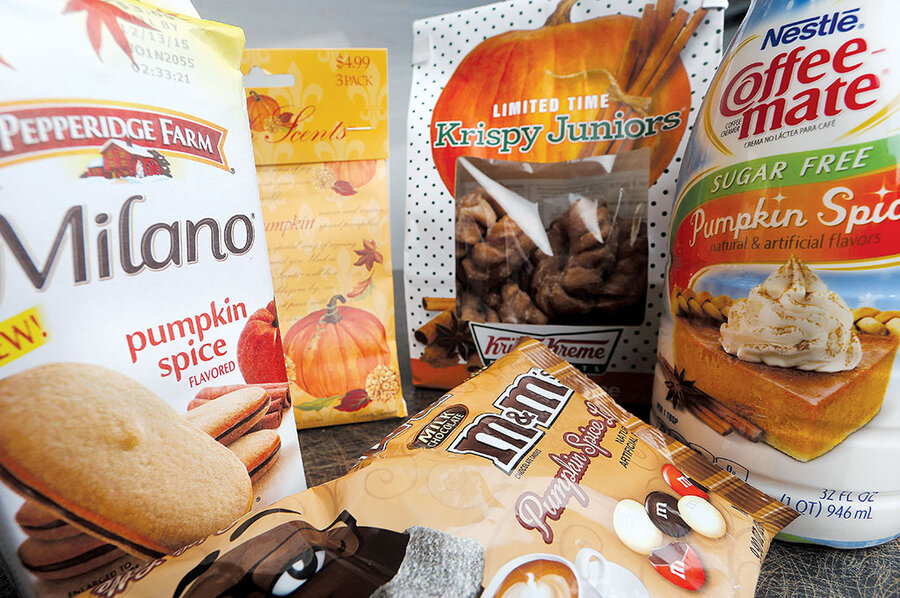Pumpkin spice: why people love it or hate it
Loading...
Twelve years after Starbucks introduced the Pumpkin Spice Latte on its menu, pumpkin spice has become an undeniable cultural presence every fall. And on Twitter, it’s even wearing shades.
A cool-looking Pumpkin Spice Latte (@TheRealPSL) with a stylishly whipped do is a social media “personality” with 121,000 Twitter followers. Starbucks carefully cultivates its celebrity status by tweeting out vacation photos and promos for knitted cup cozies emblazoned with “Team PSL.”
But pumpkin spice has jumped off the shelf of the local coffee shop and can be found romancing almost every mass-marketed product out there. It now flavors everything from hot drinks and cold beverages to pet treats, baby food, chewing gum, and even Pringles, M&M’s, and Oreos. According to Nielsen, 37 percent of US consumers purchased a pumpkin-flavored product last year.
“There is a whole science of taste, so when you find these combinations that work with a segment of the population it gets exciting,” says Susan Fournier, a marketing professor at Boston University’s Questrom School of Business. “[Marketers] look around ... and find out what is working and reproduce it. That’s much less expensive than doing the research yourself.”
Pumpkin spice also has its equally passionate detractors – the anti-trenders, the pumpkin-spice haters loudly voicing disgust. A menacing-looking “The pumpkin spice must flow” logo has spawned taunting YouTube videos, T-shirts, and memes.
“Anything done especially well should ignite love and hate,” says Ms. Fournier. “And that’s what fuels the whole dynamic. If it appealed to everybody, it’s just mainstream nothingness.”
In other words, pumpkin spice isn’t going out of season anytime soon. But plain ol’ pumpkin pie filling still reigns as the top pumpkin product, with $135 million in sales in the past year.
That might not be a good thing. Reports say that a wet summer has had a negative effect on the pumpkin crop. So stock up for Thanksgiving, before you’re left with nothing but the spice.








